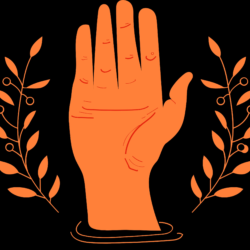The Lovaas Method
The expression applied behaviour analysis is meant to be a generic term for the application of behaviour approaches to wide range of settings. It is not supposed to be about a specific approach or method. Sadly, in the field of autism, a debate emerged about a specific program which created a strongly polarized response. We must remember that, in the autism field during this period, there was a constant searching for magic bullets and cures. In the 1980s, a seminal paper published in America by Ivar Lovaas claimed that early intervention using behavioural methods (some of which relied heavily on punitive consequences) could be a potential ‘cure’ for autism (1987). These claims were highly exaggerated, and led to an intense and vitriolic debate (Silberman, 2015). Families rushed to get their kids into programs, and who could blame them with such incredible claims?
I remember talking to Professor Rita Jordan from the University of Birmingham about this hotly debated issue. She was very clear that the reductions in overtly repetitive behaviours, sometimes referred to as ‘stimming’, did not necessarily mean that they were changing autistic behaviours. She also pointed out that you can make someone behave in a different way using these methodologies, but it does not mean that you have changed how they think, feel and see the world. Temple Grandin, in her book The Autistic Brain (2013), made a very strong case about autism being a different way of seeing and understanding the world.
I became increasingly uncomfortable when I visited schools as a professional psychologist, where I routinely saw controlling techniques implemented by well intentioned teachers who wanted to make a difference. These included the use of egg timers and alarms with rigid schedules for teaching activities, almost reminiscent of a factory production line. The use of sanctions and punitive consequences were very commonplace at the time, and sadly still are in some places. I remember seeing a young boy placed in what was described as a ‘time-out room’ when he failed to engage in a task.
It seemed like an awful lot of effort to me, especially as the young man clearly had developmental disabilities and most likely memory problems. I asked myself the question, ‘When he goes home tonight, what will he remember from his school day?’ There is often a great deal of uncomfortableness from practitioner’s who apply these approaches, as they often witness clear signs of distress from the young people concerned. Professionals tell them, ‘This is only an extinction burst’ (this technically means that when a reinforcer has been withdrawn, behaviour gets worse before it gets better). To me, the ends do not justify the means. Learning should be a collaborative, enjoyable and, wherever possible, stress free experience The seductive draw of behavioural methods, especially where teaching is concerned, is not up for debate. In these classrooms, there was no doubt that learning was taking place, which to many families and teachers seemed almost miraculous. What concerned me was, were these children happy, and were there better ways to teach them that were gentler?
There were many other behaviourally-based approaches at the time, such as those developed at the University of North Carolina by Eric Schopler and Gary Mesibov at Division TEACCH. TEACCH stands for the Treatment and Education of Autism and related Communication handicapped Children (Mesibov, Shea & Schopler, 2010). The TEACCH approach focused on structure and giving people a concept of time, often known as ‘first and then’, or ‘now and next’. These approaches are often successful because they concentrate on making the world more predictable for people. This works really well when individuals concentrate on people’s strengths and the things they enjoy. The use of visual supports, still with the principles of errorless learning, seemed to me a much gentler way of teaching people skills. I still believe this to this very day.
I found that I was more comfortable with these approaches than the behavioural methods of my early career. After 2004, my organisation Studio 3 was beginning to work internationally as well as in the UK. It was interesting that, in Scandinavian schools, the TEACCH approach was often combined with a low arousal ethos, for example allowing children and adults more breaks from teaching and learning. Combining this proactive approach to teaching with the low arousal philosophy appeared to have positive outcomes. However, it was interesting to note that, even with these gentler approaches, there still appeared to be a divide in terms of how these methodologies were applied; a right and left wing TEACCH. When I say ‘right-wing TEACCH’, I mean that individuals are applying the approach in an extremely rigid and inflexible manner. Left-wing TEACCH involves a more laid back, personalised approach where the individual learning style leads to the programme fitting the person. People who adopt the latter approach tend to combine low arousal crisis management strategies quite easily with their work. As a Swedish colleague once said to me, ‘I apply TEACCH principles, but I also do it in a much more relaxed manner’.
Note: the article above was written by Professor Andrew Mcdonnell, who is a clinical psychologist has about thirty years of work experiences in managing challenging behaviours.
References:
Lovaas, O. I. (1987). Behavioural Treatment and Normal Educational and Intellectual
Functioning in Young Autistic Children. Journal of Consulting and Clinical
Psychology, 55(1), 3-9.
McDonnell, A.A. (2019). The Reflective Journey: A Practitioner’s Guide to the Low
Arousal Approach. Warwickshire: Studio 3 Publications.
Mesibov, G., Shea, V. & Schopler, E. (2010). The TEACCH Approach to Autism
Spectrum Disorders. Berlin: Springer Science & Business Media.
Silberman, S. (2015) NeuroTribes: The Legacy of Autism and How to Think Smarter
About People Who Think Differently. New York: Avery.
Tromans, N. (2013). ‘The Psychiatric Sublime’, in Nigel Llewellyn and Christine Riding
(eds.), The Art of the Sublime, Tate Research Publication.
https://www.tate.org.uk/art/research-publications/the-sublime/nicholas�tromans-the-psychiatric-sublime-r1129548 [Accessed 02 October 2019].


